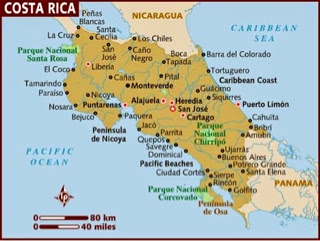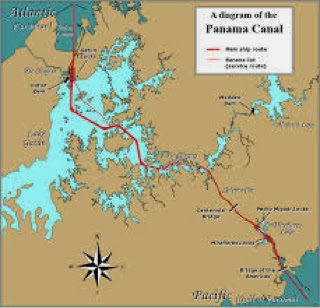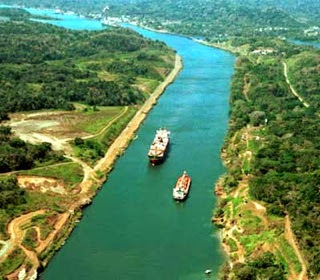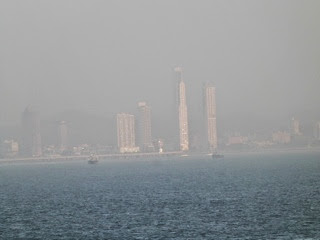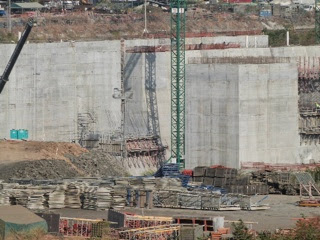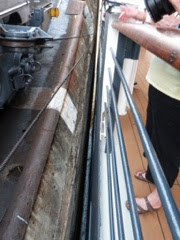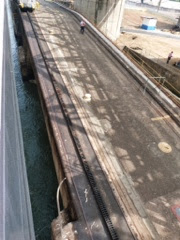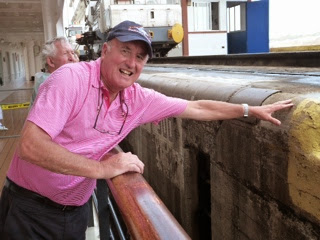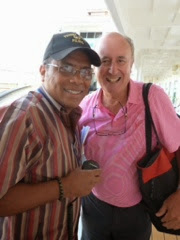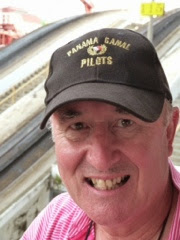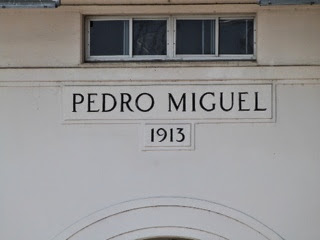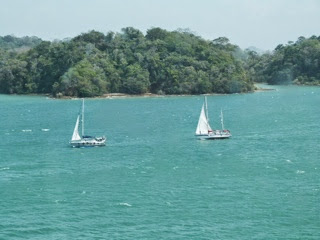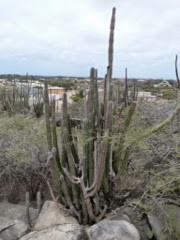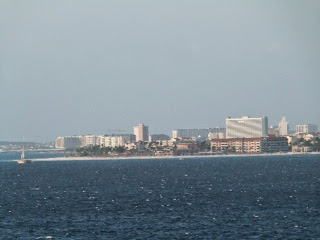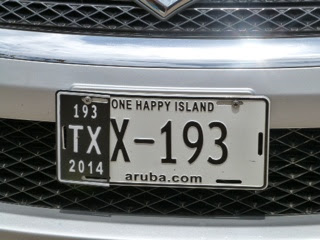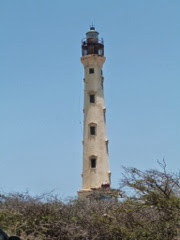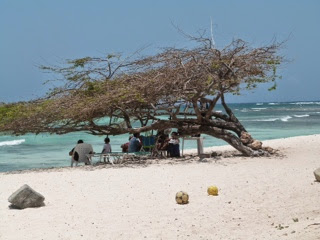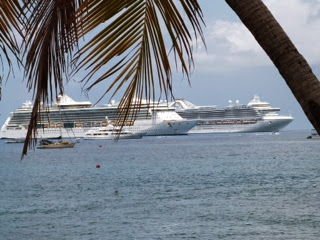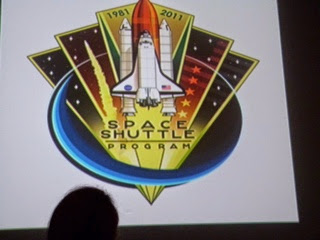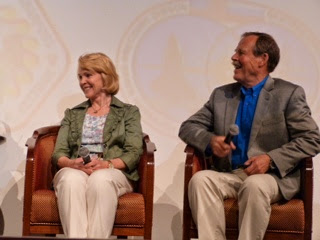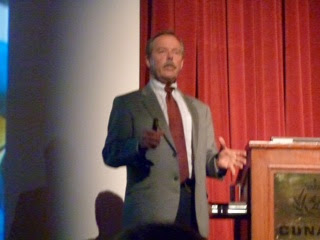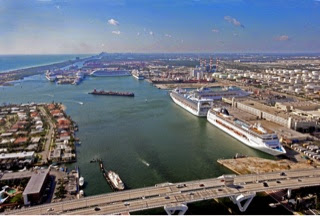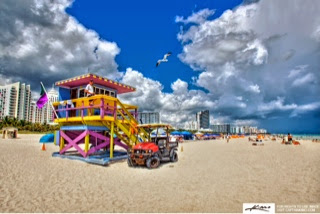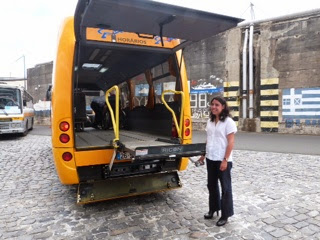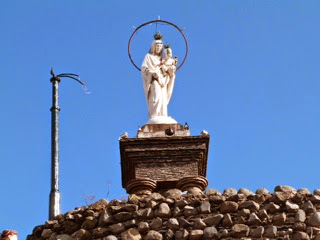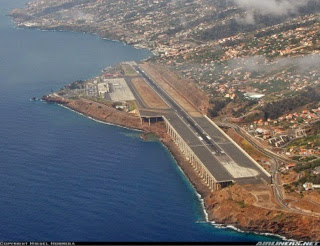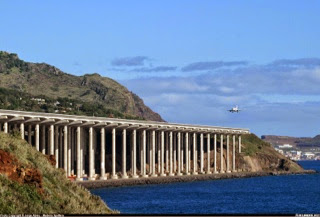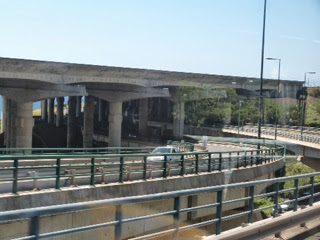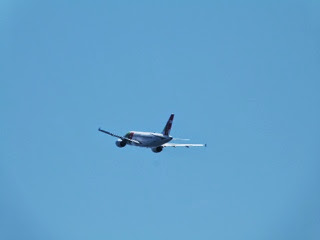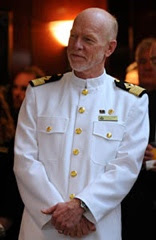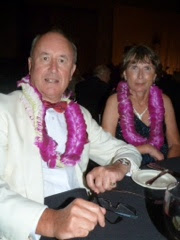We arrived in Puntarenas in the middle of the night. Those taking tours were leaving the ship before it was too hot. When I walked out onto the balcony at 0630 the temperature was 84 F and some tours were just leaving.
Amazing
A couple of days ago I pointed out that my late father was born on 6 April 1914 and would have been 100 on Sunday. When I mentioned this at dinner on Sunday evening one of our dinner companions, John Thompson from Sheffield, said that his father was born on the same day in the same year. An amazing coincidence. Three men at the table, two of whom have fathers born on the same day. Could someone please tell me what the odds are of that happening?
The Panama Canal
In 2012 we transited the Canal from the Atlantic to the Pacific in Queen Elizabeth. Today we went in the other direction. We had an amazing, exhausting day.
It was a beautiful morning and Panama City glistened in the distance as the sun rose.
We passed under The Bridge of the Americas at about 0800 and headed for the first series of locks – the Miraflores Locks.
Each locomotive costs between $2 million and $5 million depending on who you speak to! The locomotives do not, usually, pull the ship through, but by means of 2 hawsers and pulleys on each locomotive they keep the ship away from the edge of the canal. The ship is propelled through under its own power.
Decks 5 and 6 forward, usually reserved for the crew, were opened for passengers, and that gave brilliant views of the lock gates and the water levels, but there was no cover and it was hot and humid. My “private” deck on 9 in front of the gym gives a better overall view but Deck 3 astern proved to be the best for Panama.
Aruba
Aruba is about 18 miles north of Venezuela and is now part of the ABC group of islands – Aruba, Bonaire and Curacao. Formerly a part of the Netherlands Antilles, it is now a separate entity within the Kingdom of the Netherlands.
Cloes was the driver. We were told that he was a good driver. He was, when he looked where he was going, but he often turned round to talk to us, and he often took both hands off the wheel to help his explanations!
I climbed them, but the view from the top was not sensational. We then drove to the northern Atlantic coast. An impressive rocky coastline with large waves breaking heavily.
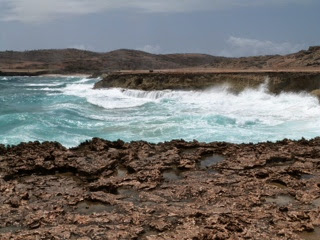 It was Stop 2. The Natural Bridge. Sadly it collapsed in 2005 as you can see, but a new mini natural bridge is there with the appropriate warning!
It was Stop 2. The Natural Bridge. Sadly it collapsed in 2005 as you can see, but a new mini natural bridge is there with the appropriate warning!
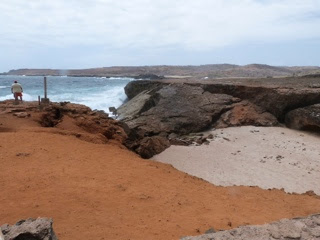
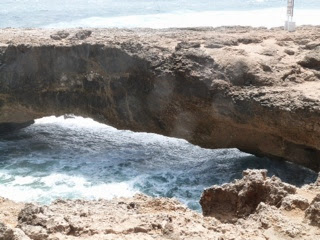
 Stop 3 was the Chapel of Alto Vista. The road to it was blessed with white crosses and extracts from the Lord’s Prayer and other biblical quotes.
Stop 3 was the Chapel of Alto Vista. The road to it was blessed with white crosses and extracts from the Lord’s Prayer and other biblical quotes.
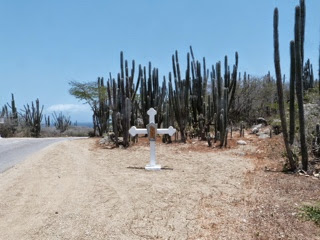
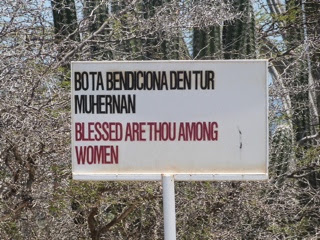
 Also known as the Little Chapel, the pews outside are apparently always packed with worshippers.
Also known as the Little Chapel, the pews outside are apparently always packed with worshippers.
In the sand there are numerous divi divi or Watapana trees whose branches are bent at right angles to the trunk by the ever present trade winds.
Grand Cayman
“Attorneys at Law” the sign said. I thought It was another jewellery store in the shopping mall but I was wrong. It was a very impressive office, but this is Grand Cayman. Packed with 554 Banks plus Trust Companies, Insurance Companies and all sorts of financial institutions. I decided to leave the lawyers to their own devices.
Astronauts
It is not often that you get to shake hands with two astronauts in one day. Well I did it yesterday and today in the Lido Restaurant.
The Last Leg
On Wednesday in Fort Lauderdale, there was a large disembarkation, including all those who had boarded on 12 January in Ft Lauderdale. Theirs was a 94 day voyage that qualified as a Full World Voyage! In the main they were US citizens.
Madeira
We are back in Europe! Madeira was sunny but a bit nippy when we tied up at 0800. Last time we were here it rained heavily all day and we were unable to leave the ship. There were mud slides, massive flooding and houses and dogs were washed into the sea.
When the new runway was opened in 2002 a jumbo apparently landed on it and didn’t fall off the end.
They think it’s all over – well it is now!
The last 3 days from Madeira to Southampton passed quickly.
Off again on Queen Victoria
Remembrance Sunday – 9 November 2014. We are excited to be joining Queen Victoria again for two back to back cruises, the first to the Canaries and the second to the Western Med.

